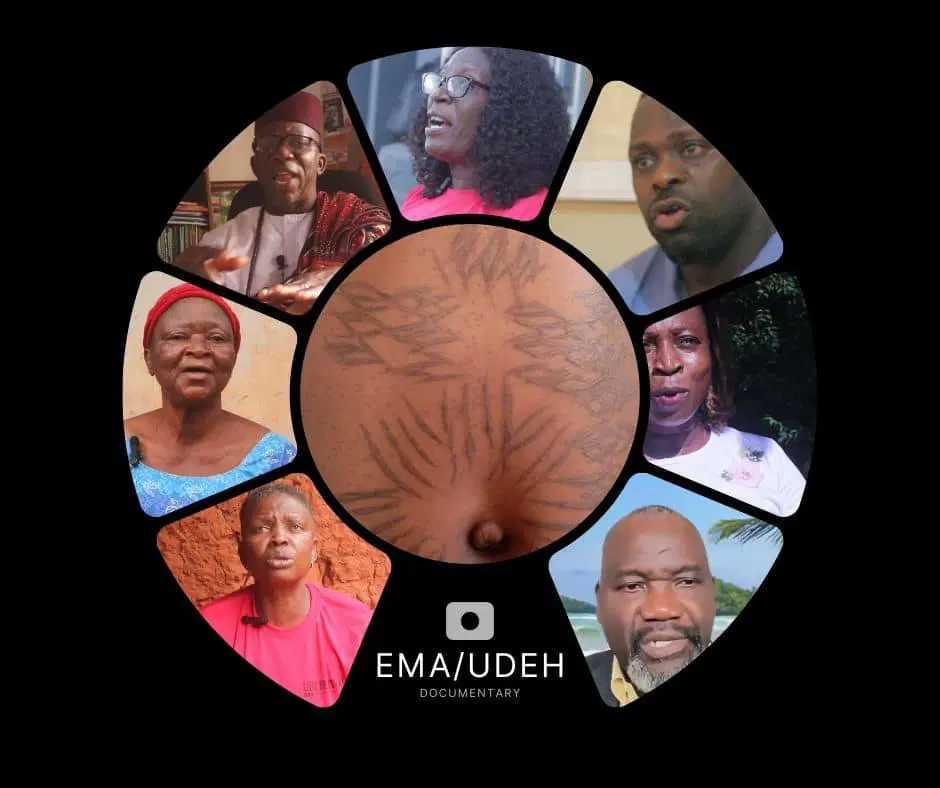To promote the history and rich cultural heritage of the Esan people, poet and festival administrator SAMUEL OSAZE has unveiled his new documentary film titled “EMA/UDEH (ANCIENT HEALING TATTOO OF THE ESAN PEOPLE).”
This legacy project explores the traditional body marking phenomenon and its multiple functionalities. The film strives to portray the ancient practice without bias, engaging both practitioners and scholars in an open dialogue.
Now available for worldwide screening, the documentary features contributions from university professors and orthodox medical experts who offer diverse perspectives to spark public engagement. It aims to ignite discussions surrounding the traditional practice in comparison to orthodox medical methods, fostering improvement and synergy for enhanced healthcare quality.
Highlighted in the documentary are esteemed academic scholars and medical experts, including MARIAM ASABE IYEH, a Professor of Dance Studies and Performance Aesthetics; MATTHEW A. IZIBIL, a Professor of Philosophy; DR. ALOJA AIREWELE; and DR. ABEL TOMS-ORIAKHI. The documentary emphasizes the role of female Ema/Udeh tattoo artists, who practice primarily for the sake of saving lives rather than for profit. The film was produced and directed by Osaze, with contributions from tattoo artists JUSTINA OKOH, MARTHA WILSON, and ANTHONIA IMHANLU. Other key production team members include TERH AGBEDEH as director of photography and OTATANE-OSO ANDREW as film editor.
The documentary poses and addresses several intriguing questions about the practice, such as: Are there grounds for comparison between modern tattoos and ancient Esan body markings? How is Ema/Udeh performed? What accounts for its ongoing popularity compared to modern medical methods? How credible is the claim that splenomegaly cannot be treated with orthodox medical approaches? Is splenomegaly unique to the Esan/Edo people, and how do other ethnic groups address the ailment? How can the ancient practice be improved to align with global health standards?
Osaze stated, “Ema/Udeh does not only cure; it has proven its efficacy amidst doubts. It also leaves carefully curated artistic footprints, turning the bearer into a mobile canvas for the tattoo artist. The Ema/Udeh artists embody both healer and artist, merging the realms of medicine and art with a focus on the well-being of the community.”
The documentary examines Ema/Udeh through four critical dimensions: aesthetics, therapeutics, identity, and spirituality, distinguishing it from the universal applications of scarification. Osaze expressed that experts are beginning to view the practice as evolutionary, with potential to transition Ema/Udeh from its traditional confines to a broader canvas, allowing the curative and artistic patterns to be showcased for public appreciation.

